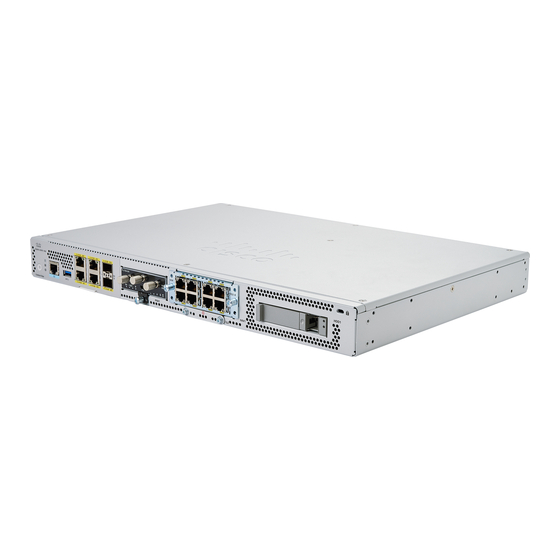Table of Contents
Advertisement
Quick Links
Installing and Upgrading Field Replaceable Units
•
•
•
•
•
•
•
•
Install and Remove Small Factor Pluggable
Laser Safety Guidelines
Optical Small-Form Pluggable (SFPs) use a small laser to generate the fiber-optic signal. Keep the optical
transmit and receive ports covered whenever a cable is not connected to the port.
Warning
Invisible laser radiation may be emitted from disconnected fibers or connectors. Do not stare into beams or
view directly with optical instruments. Statement 1051
Warning
Ultimate disposal of this product should be handled according to all national laws and regulations. Statement
1040
Warning
Pluggable optical modules comply with IEC 60825-1 Ed. 3 and 21 CFR 1040.10 and 1040.11 with or without
exception for conformance with IEC 60825-1 Ed. 3 as described in Laser Notice No. 56, dated May 8, 2019.
Statement 1255.
To install an SFP module in your device, perform these steps:
Install and Remove Small Factor Pluggable, on page 1
Removing and Replacing the Chassis Cover, on page 3
Installing a DIMM, on page 4
Removing a DIMM, on page 5
Installing the M.2 Storage Module, on page 6
Installing and Removing a NIM , on page 7
Installing Pluggable Interface Module, on page 8
Installing Drive Bays, on page 8
Installing and Upgrading Field Replaceable Units
1
Advertisement
Table of Contents

Summary of Contents for Cisco Catalyst 8200 Series
-
Page 1: Table Of Contents
Installing and Upgrading Field Replaceable Units • Install and Remove Small Factor Pluggable, on page 1 • Removing and Replacing the Chassis Cover, on page 3 • Installing a DIMM, on page 4 • Removing a DIMM, on page 5 •... - Page 2 Installing and Upgrading Field Replaceable Units Remove Small Form Pluggable Modules Step 1 Read the Safety Warnings section and disconnect the power supply before you perform any module replacement. Step 2 Slide the SFP into the device connector until it locks into position If the SFP uses a bale-clasp latch (see Laser Safety Guidelines section, the handle should be on top of the SFP module.
-
Page 3: Removing And Replacing The Chassis Cover
Installing and Upgrading Field Replaceable Units Removing and Replacing the Chassis Cover Figure 2: Disconnecting SFP Latch Mechanisms Sliding latch Bale-clasp latch Swing and slide latch Plastic collar latch Use a pen, screwdriver, or other small straight tool to gently release a bale-clasp handle if you cannot reach it with your fingers. -
Page 4: Installing A Dimm
Installing and Upgrading Field Replaceable Units Installing a DIMM Figure 3: Removing the Chassis Cover 5. Lift the chassis cover after you have removed all the screws. Note To replace the chassis cover, place the cover evenly on the top of the device and use the screws to secure it to the device. -
Page 5: Removing A Dimm
Installing and Upgrading Field Replaceable Units Removing a DIMM These are the steps to install a DIMM: 1. Remove the chassis cover. 2. Locate the DIMM slot on thedevice. There are two DIMM slots in the chassis and you can install the DIMM module on either of the slots. -
Page 6: Installing The M.2 Storage Module
Installing and Upgrading Field Replaceable Units Installing the M.2 Storage Module Figure 5: Removing a DIMM 4. Place the DIMM in an antistatic bag to protect it from ESD damage. 5. Replace the chassis cover. Installing the M.2 Storage Module The M.2 storage modules come with different storage capacities and can be replaced through the front panel if required. -
Page 7: Installing And Removing A Nim
Installing and Upgrading Field Replaceable Units Installing and Removing a NIM 4. Plug in the new M.2 storage module in the same location and secure it with the screws. Securing screws (torque 3.9-5.4 in-lbs) M.2 module orientation with metal carrier on top, M.2 module underneath. Chassis cutout prevents M.2 installation in wrong orientation. -
Page 8: Installing Pluggable Interface Module
Installing and Upgrading Field Replaceable Units Installing Pluggable Interface Module All module slots must have a module or blank installed for the product to work thermally and for safety purposes. Installing Pluggable Interface Module To insert the PIM into the router, do these steps: 1.










